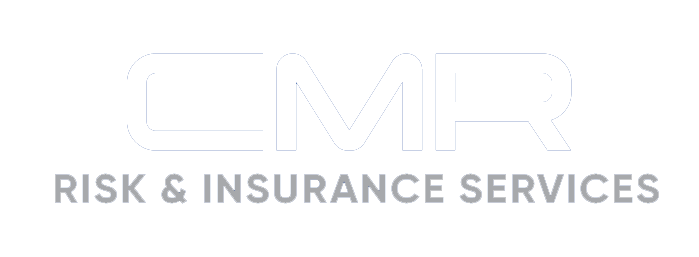workers compensation

October 29, 2024
Study Finds Extreme Temperatures Increase Workers’ Compensation Claims
The National Council of Compensation Insurance (NCCI) recently published a new study showing the relationship between injury frequency and weather conditions as they relate to workers’ compensation claims. In the study, the NCCI found that employees file 10% more workers’ compensation claims on hot and cold days than on days with moderate temperatures. The data...

October 15, 2024
OSHA Announces Top 10 Violations for 2024
OSHA recently revealed its top 10 most frequently cited standards in the 2024 fiscal year using preliminary data. This information is valuable for businesses of all kinds, as it helps them identify common exposures that affect their workforce and gives them the information they need to plan their compliance programs. For 2024, the top 10...

September 26, 2024
Proposed OSHA Heat Injury and Illness Prevention Standard
OSHA recently published a Notice of Proposed Rulemaking in the Federal Register regarding heat injury and illness prevention. If finalized, the new standard would apply to all employers conducting indoor and outdoor work in all general industry, construction, maritime and agricultural sectors where OSHA has jurisdiction, subject to limited exceptions. It would also be the...

July 22, 2024
California Enacts New Workers’ Compensation Poster Requirements
On July 15, 2024, California enacted Assembly Bill 1870, requiring employers to notify injured workers that they can consult with a licensed attorney regarding their rights under workers’ compensation laws. This law becomes effective on Jan. 1, 2025. Overview of the New Posting Requirements California’s workers’ compensation laws generally require covered employers to post a notice...

July 9, 2024
2024 Midyear Market Outlook: Workers’ Compensation Insurance
Profitable underwriting results have generated favorable conditions across the workers’ compensation insurance market for nearly a decade. According to the National Council on Compensation Insurance (NCCI), the segment produced combined ratios of 84.5 and 84.9 in 2022 and 2023, respectively, demonstrating continued profitability. Industry experts initially reported that reserve redundancies stemming from reduced presumptive liability...

July 2, 2024
CMR Webinar: California PAGA Updates
Join us for an insightful webinar co-hosted by CMR Risk and Eric De Wames, Employment Law Managing Partner at Michael Sullivan & Associates, where we delve into the intricacies of California’s Private Attorneys General Act (PAGA) claims. Governor Newsom’s office recently announced a much needed and long-awaited agreement to reform PAGA. The proposed changes aim...

June 13, 2024
U.S. Job Growth Expected to Spike Workers’ Comp Claims
Employers will likely face an increase in workers’ compensation claims in light of the U.S. Labor Department’s May 2024 report indicating the country added 272,000 new jobs. “New employees not only equal more workers’ comp premiums, they are significantly more likely to incur a claim,” Joe Paduda, owner of Health Strategy Associates, said in an interview with PropertyCasualty360.com. “Jobs in health care and...

May 17, 2024
Is Your Pool Ready for a Workers’ Compensation Catastrophe?
Catastrophic work injuries occur every day to many employers of all sizes and occupations. Regardless of the size or type of membership served, every pool faces this exposure. These life-changing claims are complex, individualistic, and require much higher standards of coordination and communication. Not having a plan in place to respond to a catastrophic injury...

May 9, 2024
Behavioral Health Issues Add Costs and Delay Injured Worker Recovery
Injured workers with identified behavioral health conditions experienced markedly longer return-to-work timelines and slower claims resolution compared to the average lost-time claim, according to an analysis by Sentry Insurance. Sentry analyzed over 45,000 workers’ compensation claims from 2012-2019, focusing on key health conditions, including chronic pain, chronic pain with medication, and psychosocial factors. Based on...

April 1, 2024
Most Common Questions of Workers’ Comp Claimants Show Where Change Is Needed
The most frequently asked questions in workers’ compensation claims reveal opportunities for improved communication and efficiency in the claims process, according to an analysis by Hi Marley, a communication platform for insurers. Using the findings can help insurance carriers and employers to streamline operations, support faster recovery for injured workers, manage expectations and provide peace of mind, Hi Marley stated. The study categorized inbound questions from workers’ compensation claimants within the Hi Marley platform. The most common inquiries related to payment status and amount (26%), contact with the adjuster (24%), and provider scheduling and approval activities (22%). Other inquiries from claimants focused on process explanation (14%), benefits (9%), and documentation (5%). These findings suggest that many of the most common questions could be addressed through proactive outreach, automation, and standardization of communications. For instance, carriers can use predefined message templates for scheduling reminders, which can support faster recovery and reduce claim cycle time and costs. Automated updates on the claim process and payment status can help manage expectations and provide peace of mind for injured workers. “With most people dealing with an accident on the job, it’s their first...
